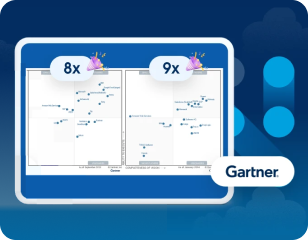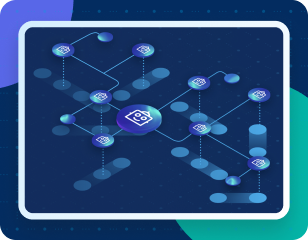@Paged
@Processor
public ProviderAwarePagingDelegate query(String query, final PagingConfiguration pagingConfiguration) throws Exception
{
return new CustomPagingDelegate(query,pagingConfiguration);
}
public QueryResult executeQuery(String query, String nextItem) throws Exception {
myServiceClient.query(query,nextItem);
}javaAdding Query Pagination Support
| DevKit is compatible only with Studio 6 and Mule 3. To build Mule 4 connectors, see the Mule SDK documentation. |
Query Pagination comes as a need when dealing with a high quantity of records. The main advantage is performance as Mule runtime partially processes chunks of records at a time instead of trying to process all the records in memory at the same time.
| To implement pagination in your connector, ensure that the service’s API to which you want to connect provides pagination functionality. |
| Be aware that enabling pagination on your connector may break backward compatibility with older Mule versions (prior to Mule Runtime 3.5.x) as it might change the returned type of a processor. |
Enabling Pagination
Enabling pagination in your connector is fairly straightforward. There are only three required conditions that your @Processor method must meet:
-
Annotate the method with
@Paged -
Must receive a parameter with type
org.mule.api.streaming.PagingConfiguration -
The return type must be a
ProviderAwarePagingDelegate
Note: The difference between the @Processor method and the operation executeQuery. The processor returns a PagingDelegate that later on (when retrieving a page) receives a connector instance already connected and executes executeQuery accordingly.
Creating a CustomPagingDelegate
The ProviderAwarePagingDelegate is where the pagination happens. Take a look at the ProviderAwarePagingDelegate abstract class, which requires two type arguments (T and P in this case). In the class definition below, T represents the data to be returned and P represents the provider of the data, your Anypoint Connector.
public abstract class ProviderAwarePagingDelegate<T, P> implements Closeable
{
/**
* Returns the next page of items. If the return value is
* <code>null</code> or an empty list, then it means
* no more items are available
*
* @param provider The provider to be used to do the query.
* You can assume this provider is already properly initialized
* @return a populated list of elements. <code>null</code>
* or an empty list, then it means no more items are available
* @throws Exception
*/
public abstract List<T> getPage(P provider) throws Exception;
/**
* Returns the total amount of items in the non-paged result set.
* In some scenarios, it might not be possible or
* convenient to actually retrieve this value. -1 is
* returned in such a case.
*
* @param provider The provider to be used to do the query.
* You can assume this provider is already properly initialized.
*/
public abstract int getTotalResults(P provider) throws Exception;
/**
* Close whatever external resource you might use
*/
@Override
public void close() throws MuleException;
}javaNote again that when executing the methods getPage(P provider) and getTotalResults(P provider), Anypoint Connector DevKit picks the correct instance of your connector out of the connection pool.
/**
* Example of Paging Delegate implementation
*/
public class CustomPagingDelegate extends ProviderAwarePagingDelegate<Item,CustomConnector> {
List<Item> cachedPage;
String query;
String nextItem;
int totalItems = -1;
public CustomPagingDelegate(String query, PagingConfiguration pagingConfiguration) {
this.query = query;
}
@Override
public List<Item> getPage(CustomConnector provider) throws Exception {
if (cachedPage != null) return cachedPage;
QueryResult queryResult = provider.executeQuery(query,nextItem);
nextItem = queryResult.nextItem();
return queryResult.items();
}
@Override
public int getTotalResults(CustomConnector provider) throws Exception {
if (totalItems != -1) return totalItems;
QueryResult queryResult = provider.executeQuery(query,nextItem);
nextItem = queryResult.nextItem();
totalItems = queryResult.totalItemsCount();
cachedPage = queryResult.items();
return totalItems;
}
@Override
public void close() throws MuleException {
//Close whatever external resource you might use
}
}javaTo create your own version of ProviderAwarePagingDelegate, you must extend it. Below is an example of a simple extension of this class:
See Also
-
NEXT: Learn how to add tests to your connector.
-
Generate the Reference Documentation.



